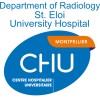
CTEPH in Patients With Prior Pulmonary Embolism and Risk Score Validation
Chronic Thromboembolic Pulmonary HypertensionPulmonary EmbolismCTEPH-SOLUTION aims to create a risk score for the early detection of Chronic Thrombo-Embolic Pulmonary Hypertension (CTEPH) among patients with previous pulmonary embolism. The risk score, created on retrospective data, will be validated on newly diagnosed pulmonary embolism patients.

Sarco-COVID Study: Measuring the Loss of Skeletal Muscle Mass in the Hospitalized Patient With the...
SarcopeniaCovid19The COVID-19 pandemic is having a devastating global impact, and older adults who experience it are at higher risk of death from the disease. However, survivors of the disease have a greater risk of suffering from pathologies such as sarcopenia, which is more frequent in younger adults and with greater severity of the disease. Sarcopenia is present in 5-13% of people between 60 and 70 years old and in 11-50% of the population over 80 years of age. The diagnosis of sarcopenia has advanced in recent years by establishing homogeneous criteria in different consensuses that necessarily combine two elements: generalized loss of strength accompanied by loss of skeletal muscle mass. Today there are three consensuses for the diagnosis of sarcopenia: the international (IWGS), the European (EWGSOP), and the most recent from a US cohort (FNIH). In all of them, the measurement of skeletal muscle mass constitutes one of the two diagnostic criteria. The main methods to measure this muscle loss that are established are imaging techniques (computerized tomography (CT), magnetic resonance imaging (MRI), dual-energy X-ray absorptiometry (DEXA) and ultrasound. The most common ultrasound measurements used for this purpose are the muscle thickness (cm) at the point of the ultrasound path of maximum muscle thickness, the cross-sectional area (area calculated by the basic software at the point of maximum muscle thickness), and the pennation angle (angle formed between deep muscle fascia and muscle fibers). The first two measurements can be made on several long muscles, while the pennation angle is usually made primarily on the medial gastrocnemius (internal twin) muscle. They are easy to obtain, bloodless, and reproducible measurements. Research efforts at this point in the pandemic should focus on the longer-term consequences of the disease, sequelae such as sarcopenia in patients who have suffered from COVID-19. At the same time, clinicians must become increasingly aware of the condition and its measurement integrated into clinical practice. The knowledge provided by studies such as the one presented will allow the development of specific interventions. The risk of sarcopenia should be considered when carrying out a risk / benefit assessment of the established treatment (for example, dexamethasone), and considering a multidisciplinary treatment that includes dietary inputs.

Assiut University Registry for ACS Patients During COVID-19 Pandemic
ACS-COVID-19-AssiutTo register pathological events occurring to all acute coronary syndrome patients coming to Assiut university heart hospital through one year during COVID- 19 pandemic

Observational Study for the Evaluation of Tracheal Stenosis in COVID-19 Patients
Tracheal StenosisDefine the actual incidence of tracheal stenosis in patients who underwent either prolonged intubation or tracheostomy and to compare incidence, clinical course and outcome between COVID-19 and non-COVID-19 patients.

Attitudes Towards Receiving Mental Health Care Using Telehealth During the COVID-19 Pandemic
Psychiatric DisorderMental Health Disorder2 moreThe purpose of this study is to collect patients' experiences and feedback to better understand and improve mental health care using telehealth services. This is critically important as telehealth appointments, including both phone and video calls, continue to be offered for regular appointments to reduce in-person interaction as a preventive measure to help control the spread of COVID-19. Studying patients' perceived benefits and challenges of using telehealth services for mental health care will allow us to prioritize improvements to the telehealth experience and potentially, patient adoption of and comfort with remote appointments. This study's results would also inform policy makers and insurance companies about the potential utility of delivering mental health care through telehealth, even beyond the duration of the COVID-19 pandemic.

COVID-10 in the Pediatric Population: SARS-CoV-2 Seropositivity
SARS-CoV-2 InfectionThe purpose of this study was to conduct an epidemiological survey of the pediatric population via SARS CoV-2 IgG antibody testing in order to evaluate the incidence of asymptomatic infection and seropositivity among children and establish risk factors of infection and characterization of asymptomatic carriers. Additionally, among seropositive children, antibody titers will be explored in order to reach a better understanding of the relationship between immunity over time after different types of initial exposures. Methods Study Design and Population A prospective epidemiological survey was conducted in the Pediatric Emergency Department (ED) of the Shaare Zedek Medical Center, a tertiary medical center in Jerusalem, Israel, between October 2020 and January 2021. All patients presenting to the pediatric ED during the study period and requiring blood tests or and IV insertion for any clinical reason were considered eligible to participate in the study. The parents and/or legal guardians of these patients gave oral consent for an additional 1-3 ml of blood to be sent for Sars-CoV-2 antibody testing. In addition, all consenting parent/guardians filled out a comprehensive questionnaire regarding demographic background, past medical history, and specific Covid-19 details such as exposures to carriers, past PCR testing, symptoms etc. All patients with positive serology results were contacted by phone and updated of the test results. Laboratory testing All blood samples were collected in a clot-activator test tube. Initial testing was conducted using the Abbott SARS-CoV-2 IgG assay. A positive result was considered a value above 1.5 with 0.8 - 1.4 cosidered grayzone results. All positive and grayzone results were then retested in the DiaSoren LIAISON® SARS-CoV-2 S1/S2 IgG assay. Statistical Analysis Statistical analysis was conducted using SPSS Statistics for Windows, Version 25.0. Armonk, NY: IBM Corp. Clinical variables were analyzed using the Chi-squared test for categorical variables and the t-test for continuous variables. All statistical tests were two-way tests and P value of 5% or less was considered statistically significant.

Spanish Study to Analyze the Histopathological, Ultrastructural and Microbiological Findings Obtained...
Covid19The aim of this study is prospectively analyzing the histopathological, ultrastructural and microbiological findings from autopsies performed on patients with COVID-19.

Analysing the French COVID-19 Epidemic Using a National SARS-CoV-2 RT-PCR Database
Covid-19SARS-CoV InfectionAnalysing ths spread of COVID-19 epidemics in a timely manner is key to implementing public health control strategies. The investigators propose to analyse a large set of laboratory SARS-CoV-2 RT-PCR data to explore potential links between Ct values and epidemic parameters.

Physical Activity Post COVID-19
Covid19The purpose of this study is to characterize functional status and physical activity of patients with COVID-19 after hospital discharge.

Management of Acute Appendicitis at District General Hospital
Appendicitis AcuteCovid19The Investigators aim to assess; whether the changes in managing patients during COVID has reduced the negative appendicectomy rate? compare the difference in outcomes of conservatively and surgically managed Acute Appendicitis? Whether there uniformity in prescribing postoperative antibiotics with resultant outcomes? Whether the incidence of complicated appendicitis has increased?
